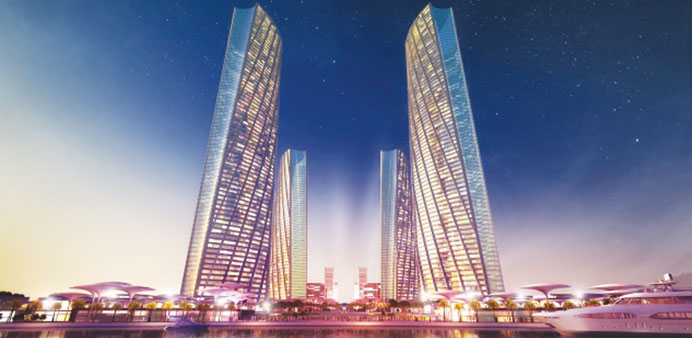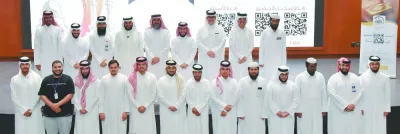Lusail’s biggest secret is its heritage. For a city that has yet to be built, it is also referenced extensively in the history books of Qatar. The city that will host the opening and closing matches for the tournament is the same place where the founder of Qatar, Sheikh Jassim bin Mohamed bin Thani, resided at various points in his life, mostly in his later years, and was buried there after his death on 17 July 1913.
By Shaikha al-Thani/Doha
With spotlight comes criticism. And we have had our fair share of criticism for winning the rights to host the 2022 FIFA World Cup Qatar.
Along with our promise that the World Cup will be a continued catalyst for the development of Qatar’s vision, we also have a duty to point out what is being said that isn’t true. One widely shared headline relating to Qatar’s World Cup plans centres around Lusail: a host city that has yet to be built.
While this was partially true in 2010, where Lusail City was undergoing major construction, work has now progressed significantly. Last month it was announced that the Lusail Port commenced operation and 35 residential villas were sold at Qetaifan Islands, marking the completion of second-stage sales at one of Qatar’s most integrated and futuristic communities.
Further to that, Lusail’s biggest secret is its heritage. For a city that has yet to be built, it is also referenced extensively in the history books of Qatar. The city that will host the opening and closing matches for the tournament is the same place where the founder of Qatar, Sheikh Jassim bin Mohamed bin Thani, resided at various points in his life, mostly in his later years, and was buried there after his death on 17 July 1913.
Sheikh Jassim bin Mohamed left the town of Al Daayen in 1902. Through various political chapters during Sheikh Jassim’s reign, the Lusail fort symbolises Qatar’s beginning and development into the game-changing country it is today.
Earlier this year, FIFA announced that the final match for the 2022 FIFA World Cup will be played on a historical day in Doha. With the announcement of a switch to a winter World Cup, the final match will be held on Qatar National Day, December 18, where the country comes together to celebrate the historical day in 1878, when Sheikh Jassim succeeded his father, Sheikh Mohamed bin Thani, in leading the country towards unity and foundation.
With the foundation of a country brought together by one man’s vision, the founder, and an independent population who identified themselves as Qataris rather than adhere to the Ottoman and English influence, comes the development of Lusail City. There will be 19 different districts in the 38sq km city. Residents of Lusail City will live in waterfront villas or garden villas or towering skyscrapers, with enough housing to accommodate 200,000 people.
Qatari Diar describes the project as more than just another development: “It is self-contained and comprehensively planned city signifying Qatar’s progress on a grand scale.” Further to the progress of the city, comes the progress of the stadium.
Earlier this year, the Supreme Committee for Delivery & Legacy (SC), tasked with delivering the infrastructure for the 2022 FIFA World Cup, announced progress on the most high-profile stadium that Qatar has proposed for the tournament, Lusail Stadium, by appointing Foster + Partners, one of the most innovative architecture and integrated design firms in the world, as the design architect.
Lusail Stadium is the proposed host venue for the opening and final matches for the 2022 FIFA World Cup Qatar, which will become the centrepiece of the tournament, and an important part of Qatar’s future as a sports hub.
The SC’s managing director said it best in the 744-page bid book submitted to FIFA during the bidding process for the 2022 FIFA World Cup, when he summarised the inspiration behind Qatar’s stadium designs being born out of Qatar’s rich traditional architecture seen in all of Qatar’s proposed stadiums. Highlighting a commitment made to FIFA, the teams, the fans and the Qatari people will share this remarkable experience of the first World Cup in the region.
HE Sheikh Mohamed bin Hamad al-Thani said: “The heart and soul of every FIFA World Cup are the unforgettable stadiums where the cherished experiences are carried away by millions of people. We have reinvented the Bid, created an innovative hosting concept, and, therefore, needed a new approach to designing the stadiums. Each stadium we present was born from this singular ideal. These elements harmonise to perfection in the Lusail Stadium, designed by the world-famous Foster + Partners.”
And deep within the anticipation that comes for the stadium, comes further development for the city. Since the launch of the Qatar National Vision 2030, a lot of progress has been achieved in Qatar’s long-term ambitious national journey of human development and sustainable economic diversification.
In 2013, with HH Sheikh Tamim bin Hamad al-Thani becoming the new Emir of Qatar, HE Sheikh Hamad bin Jabor al-Thani, previously the director general of the General Secretariat for Development & Planning, wrote in an article that Qatar is on the verge of another period of growth and prosperity inspired by the achievements of the Father Emir. This period of growth will be inspired greatly by the vision for Lusail.
Last December, Qatar suffered a loss with the death of Sheikh Jassim bin Thani, my great grandfather and the last of the founders’ grandchildren, who made sure to teach us of the founder’s achievements. This takes me back to the idea that has caught worldwide traction: an entire city that has yet to be built.
For me, Lusail City, stadium and name is part of Qatar. And by association it is part of our history, and in the process of showing the world Qatar’s unique take on the most unforgettable World Cup yet.



